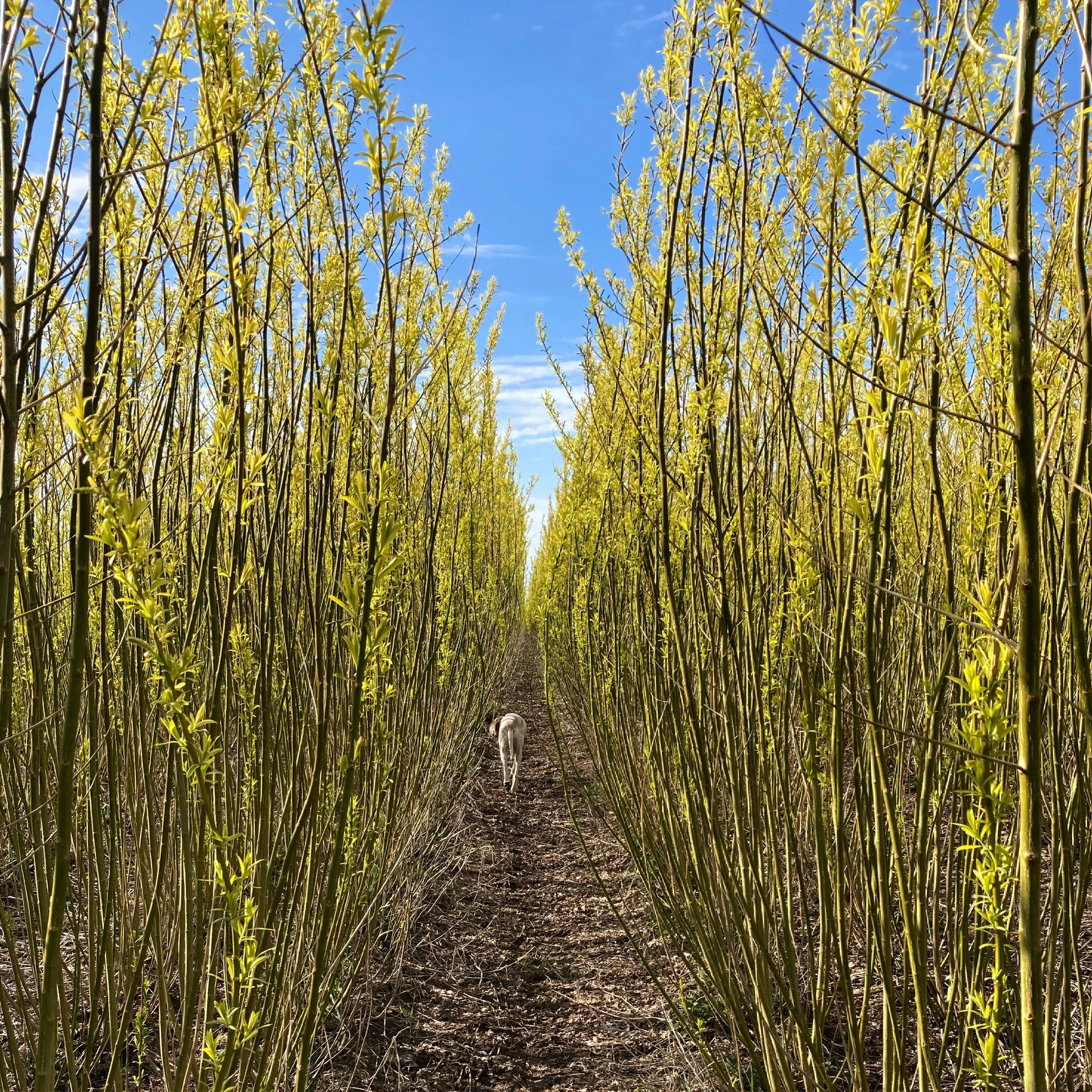A Shift in Practice
Where are we now?
Biogenic materials for the construction industry are currently implemented at a limited scale, primarily specified by tradespeople and deployed within a business-to-consumer framework. This limitation arises from the materials being viewed as substitutions for other materials, instead of being integrated into building systems. As a result, the application of biogenic materials in architecture remains at the experimental level, confined to small-scale projects such as houses and pavilions.
Where do we want to go?
Our aim is to develop a scalable building system that integrates biogenic materials into pre-manufactured elements. This project seeks to enable the industrial utilization of willow in façade systems that pave the way for their broader application in architecture.
How do we do it?
Examining the full value chain, PileByg is responsible for cultivating and harvesting the raw material, which is then processed into a usable building material by MOOW. STATICUS assembles these materials into prefabricated unitised façade systems, while SHL designs these elements and incorporates them into building façades. This approach enables contractors to install on site efficiently, without reliance on-site craftsmanship. This on-site craftsmanship increases time and costs, whereas this shift towards premanufactured digital craftsmanship enables contractors to efficiently assemble buildings onsite.
Pilefaçade calls on a creative approach to eliminating material production waste by examining a single plant and its implementation across multiple façade components. Our project scope was to investigate:
- Thick willow branch sections for laminated willow structural frame
- Willow offcuts for pressed boards
- Thin willow branch sections for rain-screen cladding









